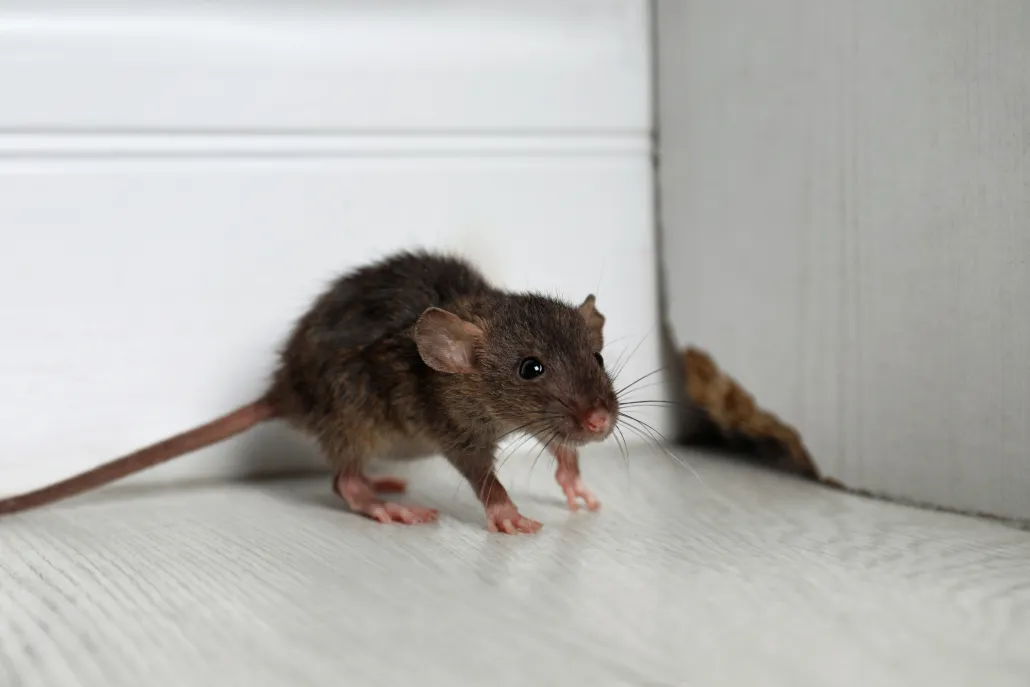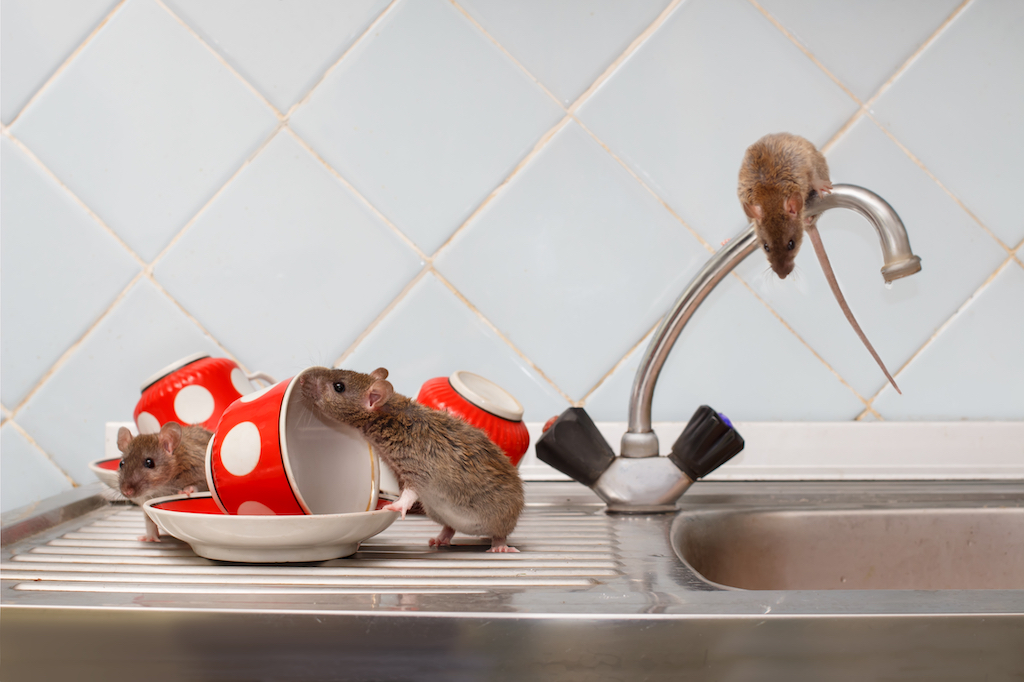Florida’s subtropical environment, celebrated for its mild winters and abundant warmth, provides the perfect conditions for many forms of wildlife – unfortunately, rodents among them. Whether you’re dealing with mice creeping indoors through tiny foundation gaps or rats establishing colonies in attics, rodents can create health risks, damage property, and cause ongoing stress if not addressed. In a refined locale like Coral Gables, failing to curb rodent activity swiftly can tarnish occupant comfort, lead to structural wear, and spark concerns over contamination. This service page clarifies why rodents thrive in Florida’s climate, how to identify potential infestations, and why working with a professional rodent exterminator for rodent treatments is the most reliable approach to safeguarding your property. Acting at the first indicators saves you from amplified rodent populations, more expensive repairs, and daily distress over hidden pests.
Why Rodents Flourish in Florida

- Mild Winter Weather
In northern states, icy winters curb rodent populations by imposing feeding and breeding slowdowns for months. Florida’s winter, however, infrequently drops below freezing for extended stretches, letting rats and mice remain active all year. Even short cold spells fail to hamper indoor rodents that benefit from consistent heating or air conditioning, allowing them to feed and reproduce uninterrupted. - Steady Rain and Humidity
Rodents depend on water, which Florida’s climate offers amply through moisture-laden air, periodic rains, or condensation near AC units. If flooding displaces outdoor nests, rodents often migrate inside, exploiting any gaps around utilities or foundation cracks. Once inside, consistent water from leaky pipes or under-sink drips helps them establish permanent colonies. - Near-Constant Food Sources
Mice and rats eat almost any organic matter—such as food scraps in trash bins, unsealed cereals, or leftover pet food. In a bustling area like Coral Gables, even minor lapses (like letting trash accumulate or storing dry goods in unsealed containers) create easy feeding stations for rodents. With Florida’s warm climate, occupant housekeeping or daily trash removal is essential to avoid attracting these pests. - Minimal Seasonal Dormancy
Colder locales experience rodent slowdowns during harsh winter months. In Florida, with no extended freeze, rodent breeding rarely abates. A small infiltration can grow into a large-scale infestation across multiple rooms or floors if occupant or professional strategies aren’t initiated promptly. - Frequent Movement of People and Goods
Coral Gables, known for its Mediterranean Revival architecture and proximity to Miami, hosts numerous occupant transitions—renovations, secondhand furnishings, or new shipments from out-of-state. Rodents can stow away in crates or furniture. Once they find a home’s warmth and scattered crumbs, they settle for the long run unless occupant vigilance or professional solutions remove them.
Telltale Signs of a Rodent Infestation
- Droppings
Mouse droppings resemble small, dark grains of rice, while rat droppings are larger and shaped like small capsules. Fresh droppings appear moist and darker, turning duller or crumblier with age. Noticing droppings in cupboards, pantries, or along walls strongly suggests rodents frequent these spots for food or shelter. - Gnaw Marks and Holes
Rodent incisors grow continually, forcing them to chew on wood edges, plastic bins, cardboard boxes, or wiring. Small holes near floorboards or corners of packaging indicate potential feeding or nest-building. Discovering gnaw marks on wires can alert occupants to fire hazard risks if left unaddressed. - Nests of Shredded Material
Mice or rats often build nests from paper, insulation, or fabric in sheltered corners. If occupant rummaging in a storage closet uncovers a clump of shredded material accompanied by droppings or leftover food bits, rodents are likely raising young nearby. Immediate occupant or professional intervention can prevent expansions. - Nocturnal Sounds
Rodents move primarily at night, rummaging for crumbs or exploring new corners. Occupants might hear squeaking, scratching, or scurrying in ceilings or walls. Monitoring these noises’ location or time helps isolate possible nest sites—like attics, basements, or behind large appliances. - Unexplained Pet Behavior
Cats or dogs might sniff or paw insistently at baseboards, corners, or empty cabinets where they detect rodent scents or movement. If your pet displays unusual obsession with a specific area, investigating for droppings or nibble marks could confirm rodent presence.
Consequences of Untended Rodents
- Health and Sanitation Hazards
Rodent droppings and urine can contaminate pantries, countertops, or stored foods, potentially spreading bacteria or viruses. Mice or rats may also carry fleas or ticks indoors, introducing secondary pest or disease concerns. Swift occupant or professional control protects occupant well-being and property cleanliness. - Structural and Wiring Damage
Rodents gnaw on wood beams, insulation, or even electrical cables, risking short circuits or fire outbreaks if left unchecked. Over time, hidden chewing degrades structural elements. Repairing these issues can become costly if occupant detection is late. - Rapid Population Growth
A pair of mice or rats reproduces multiple times per year in Florida’s mild environment. Ignoring a minor infiltration could result in dozens of rodents occupying walls or subfloors, greatly complicating extermination efforts and occupant frustration. - Daily Stress and Inconvenience
The possibility of discovering droppings in cabinets or hearing scurrying at night undermines occupant comfort. Families or businesses may fear rodent sightings during dinner parties or client visits. Full elimination swiftly relieves these tensions, restoring occupant confidence in their property.

Why a Professional Exterminator Is Essential
- Thorough Inspection
A rodent exterminator inspects kitchens, basements, attics, or yard edges for droppings, gnawing, or burrows. Identifying which species (mice vs. rats) clarifies the right trap size, bait formula, or perimeter approach. This detailed mapping ensures every rodent pathway receives coverage. - Focused Trapping and Baiting
DIY traps, if misapplied, risk scattering rodents deeper. Professionals strategically place snap traps or tamper-resistant bait stations along rodent runs—like walls or utility lines—maximizing lethal encounters. Occupants or children remain protected from accidental contact. - Sealing Entry Points
Without exclusion, fresh rodents can replace those removed. Exterminators advise occupant-driven repairs—like caulking foundation cracks, installing door sweeps, or blocking pipe inlets with steel wool. Permanently closing these openings cements the success of rodent removal. - Sanitation Guidance
Beyond elimination, occupant housekeeping ensures no leftover scraps or open cereal boxes feed mice or rats. Storing goods in sealed containers, discarding clutter, and promptly fixing water leaks hamper rodent reestablishment. This synergy of occupant diligence plus extermination results in stable rodent control. - Follow-Up and Monitoring
Because rodents breed quickly, scheduling re-checks or occupant-based trap observation verifies no new litters or survivors remain. If occupant sightings recur, additional trap adjustments or reinforcing sealed holes finalize thorough elimination.
Methods for Rodent Treatments
- Inspection and Species Determination
Spotting droppings or nests helps identify mice vs. rats, as do droppings’ size and location. Technicians scan lesser-used rooms, behind large appliances, or yard corners for signs. Distinguishing species tailors the approach—like focusing on attic runs for roof rats or near floor-level cracks for mice. - Trap Deployment
Snap traps along walls or behind stoves effectively capture mice or rats if placed correctly with enticing baits like peanut butter. Multi-catch or live traps might be used if occupant preferences allow. Technicians check these periodically to remove captured rodents. - Bait Stations
For extensive rat populations or concealed mice, enclosed bait stations containing rodenticides address entire colonies behind walls or in crawl spaces. Slow-acting poisons ensure rodents that feed bring toxins back to nests, killing hidden groups. Occupants remain safe if these stations are locked and placed discreetly. - Sealing and Exclusion
Mice can fit through gaps the size of a dime, rats through quarter-sized holes. Filling or blocking these cracks near pipes, foundation lines, or door sweeps with steel wool or metal flashing denies rodents new infiltration points. Exterminators highlight these essential occupant repairs to maintain a rodent-free zone. - Environmental Maintenance
Occupants reorganize cluttered garages or pantries, discarding cardboard piles and old papers that provide nesting materials. Fixing leaky faucets or removing standing water denies rodents the moisture they crave. Daily occupant vigilance—like wiping counters or storing foods properly—reinforces professional efforts.
Serving Coral Gables
Coral Gables, revered for its Mediterranean Revival architecture, lush boulevards, and upscale homes, is not immune to rodent infiltration. Older properties can show subtle foundation cracks or unsealed eaves that let mice or rats enter. Modern builds might still face occasional rodent arrivals if occupant housekeeping or sealed containers are lacking. Quick occupant checks for droppings, sudden gnaw marks, or nightly scurrying noises prompt professional solutions before rodents compromise structural integrity or occupant peace.

Next Steps
Spotting rodent droppings near food cabinets, hearing squeaking in walls at night, or noticing gnaw marks on cereal boxes? Contact us to learn more or schedule your service. Our rodent treatments in Coral Gables target mice or rat colonies head-on—whether hiding in attics, behind kitchen appliances, or creeping along yard edges. By partnering with a professional exterminator, you avoid the headache of repeated droppings, potential health hazards from contamination, and structural issues caused by persistent chewing.
Quick occupant action prevents small clusters from ballooning. Through occupant housekeeping—like discarding clutter, sealing grains, promptly removing trash—and robust trap or bait station placement, rodents face lethal conditions at every turn. Reclaim your property’s tranquility and cleanliness, typical of Coral Gables’ high standards, by eradicating rodents before they overshadow daily life or occupant well-being.
Sustaining a Rodent-Free Property
- Proper Food Storage: Keep cereals, snacks, or dry goods in sealed plastic or metal containers. Crumbs or open packages entice rodents searching for easy meals.
- Remove Clutter: Minimizing boxes or piled papers in storage rooms denies rodents nesting materials. Store seldom-used items in sealed bins, leaving open floor edges for occupant checks.
- Fix Leaks and Pooled Water: Repair dripping faucets, faulty hoses, or roof leaks. Rodents require water, and removing these sources forces them to approach baits or traps.
- Sealing Entry Points: Weatherstrip doors, fill cracks with caulk or steel wool, and patch foundation holes. Even tiny gaps let mice slip in. Thorough occupant vigilance prevents infiltration.
- Routine Inspections: Occasionally examine attic corners, behind large appliances, or under sinks for fresh droppings or gnaw marks. Early occupant detection halts minor rodent appearances before they expand significantly.
By uniting occupant diligence with timely professional rodent control, southwestern Florida homeowners and businesses maintain a rodent-free zone. Even amidst Florida’s mild winters, year-round resources, and frequent occupant transitions, these integrated strategies deny mice or rats the shelter, water, and feeding grounds they need to thrive. The result is a calmer, more hygienic living or working space for everyone in Coral Gables—a reflection of the area’s esteemed reputation and occupant expectations.
